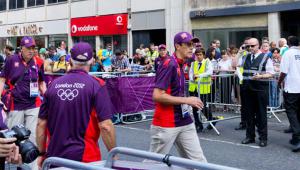By John Thornton | 9 October 2012
Good planning, flexible resourcing, adaptable behind-the-scenes technology and a can-do attitude are a few of the gold-medal lessons to be learned from the success of the first ‘Twitter Olympics’

All event organisers know that however big or small an occasion may be and despite the best planning, things will sometimes go wrong. The test of a good organiser is how quickly they respond and how visible the impact is. So, what did we learn from the Olympics and Paralympics about the management and ICT aspects?
With 34 venues and a mind-boggling matrix of sports, tasks and co-ordination, all of which had to be achieved against an immovable deadline and in the glare of the world’s media, it was generally acknowledged that the Games were well-run and reflected well on the UK.
Most of the construction was completed a year in advance, including all six of the main Olympic Park venues. The transport system performed well, and new services – like the Javelin train, which carried passengers effortlessly from North Kent to the Olympic Park in just 11 minutes – made you feel that you were in a different country compared with the usual commuter trains.
There were issues – notably security, the G4S fiasco and ticketing – but these were quickly and efficiently resolved. Undoubtedly, there were other problems and hitches behind the scenes that needed to be fixed; over time, I suspect, we will learn more of these.
However, it is clear that some of the components necessary for success included planning for the worst and hoping for the best, particularly in light of concerns about transport and the potential for gridlock.
Other factors included the capability and flexibility to quickly identify, act and resolve problems; the use of flexible resourcing, including extensive use of volunteers and the Armed Forces; and a ‘can do’ culture, coupled with high levels of delegation to resolve small issues. This is the only way you can operate on a scale involving huge numbers of volunteers and multiple agencies. All of these were held together with a common vision and a spirit of goodwill.
The London Games were billed as the first Twitter Olympics and, according to the BBC, 12 million people used their smartphones and tablets to watch live Olympics video content. In the stadium and venues, there was also considerable interest in specialist equipment, blades and adapted wheelchairs used by many Paralympians to help them compete.
Interestingly, there was little talk of the behind-the-scenes technology, even though the ticketing in particular had the look and feel of a system that was continually being adapted and refined as the Games progressed. There were undoubtedly teams of people working very hard behind the scenes to ensure that everything kept going and the systems were adapted to meet the changing requirements.
We did not hear much about the technology because, for the most part, it just did the job expected, which is how it should be.
At the centre of the Cultural Olympiad, on London’s South Bank, was an art exhibit consisting of what looked like huge children’s building blocks suspended above the walkway. These were largely ignored by the hundreds of thousands of commuters every day, but you would often see tourists and visitors moving around the display to try to make sense of the seemingly random letters on each face of every brick. Depending on your position, the letters formed into patterns that made different words. However, if you persevered and stood in the right positions, it displayed the core message ‘embrace change’.
What we learnt from the management of the Olympics and Paralympics was that if you have good planning, decisive leadership, a can-do culture, adequate and flexible resourcing, and the goodwill of all involved, you can achieve outstanding results – even if you don’t get everything right first time.
John Thornton is the director of e-ssential Resources and an independent adviser on business transformation, financial management and innovation



















